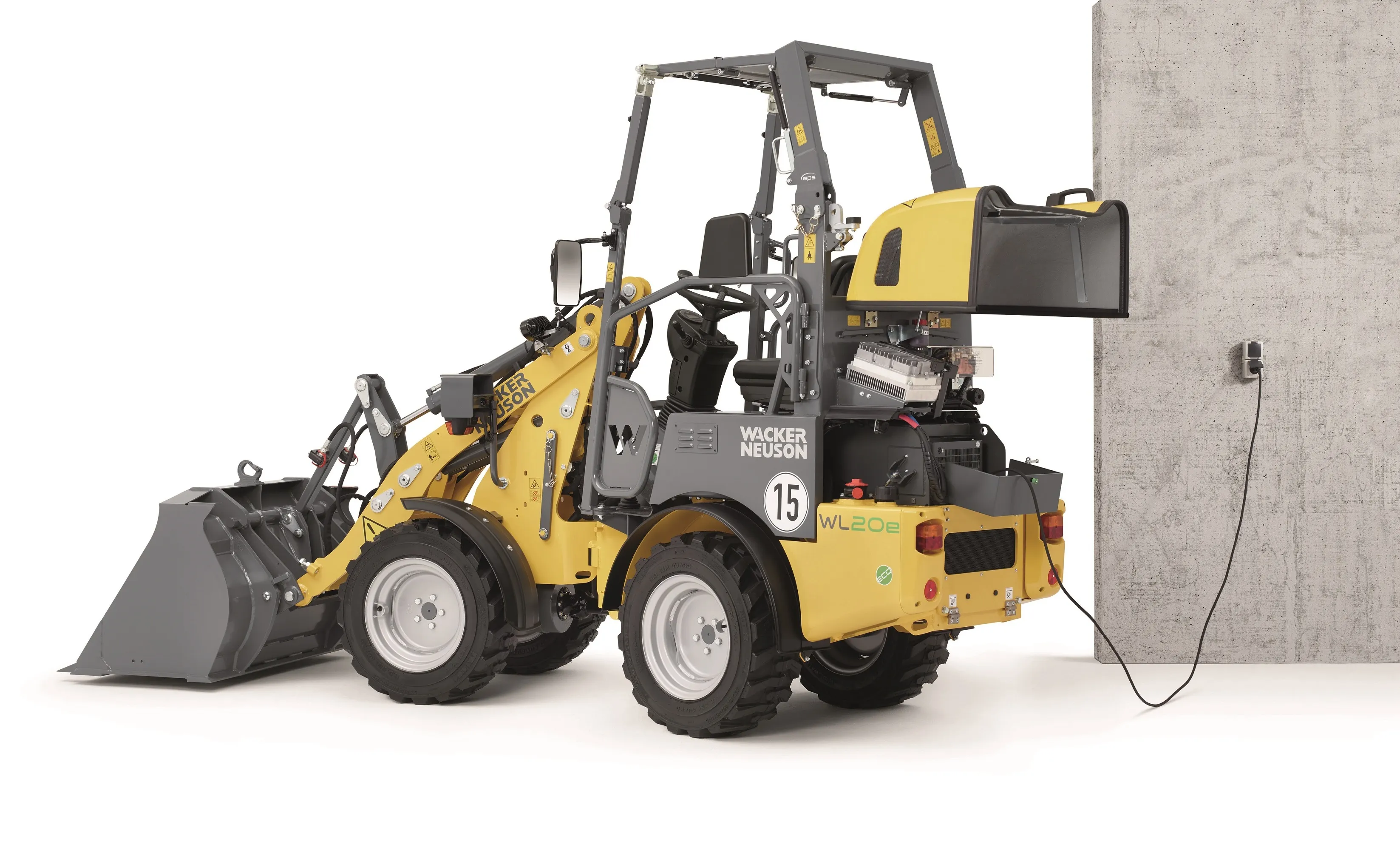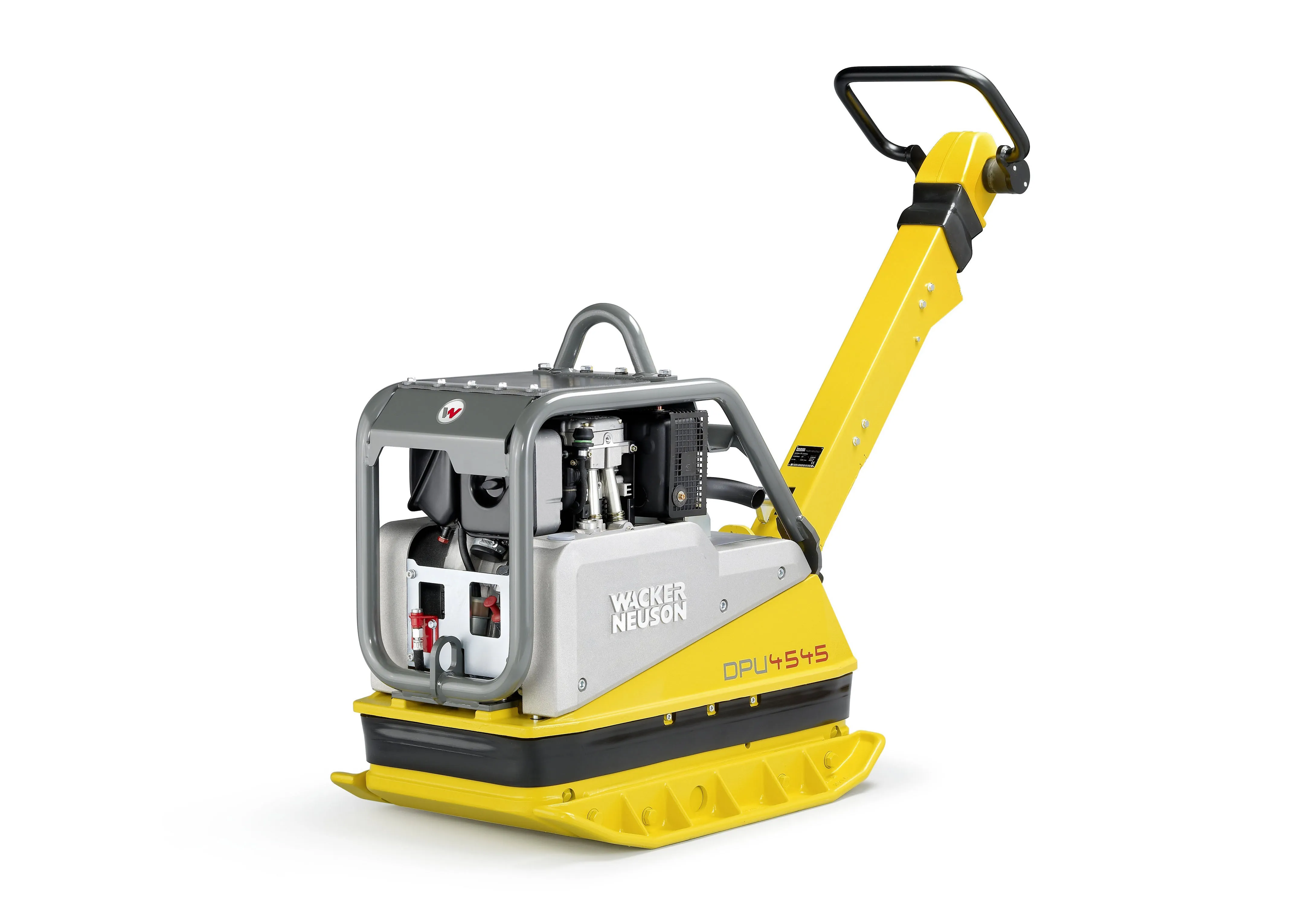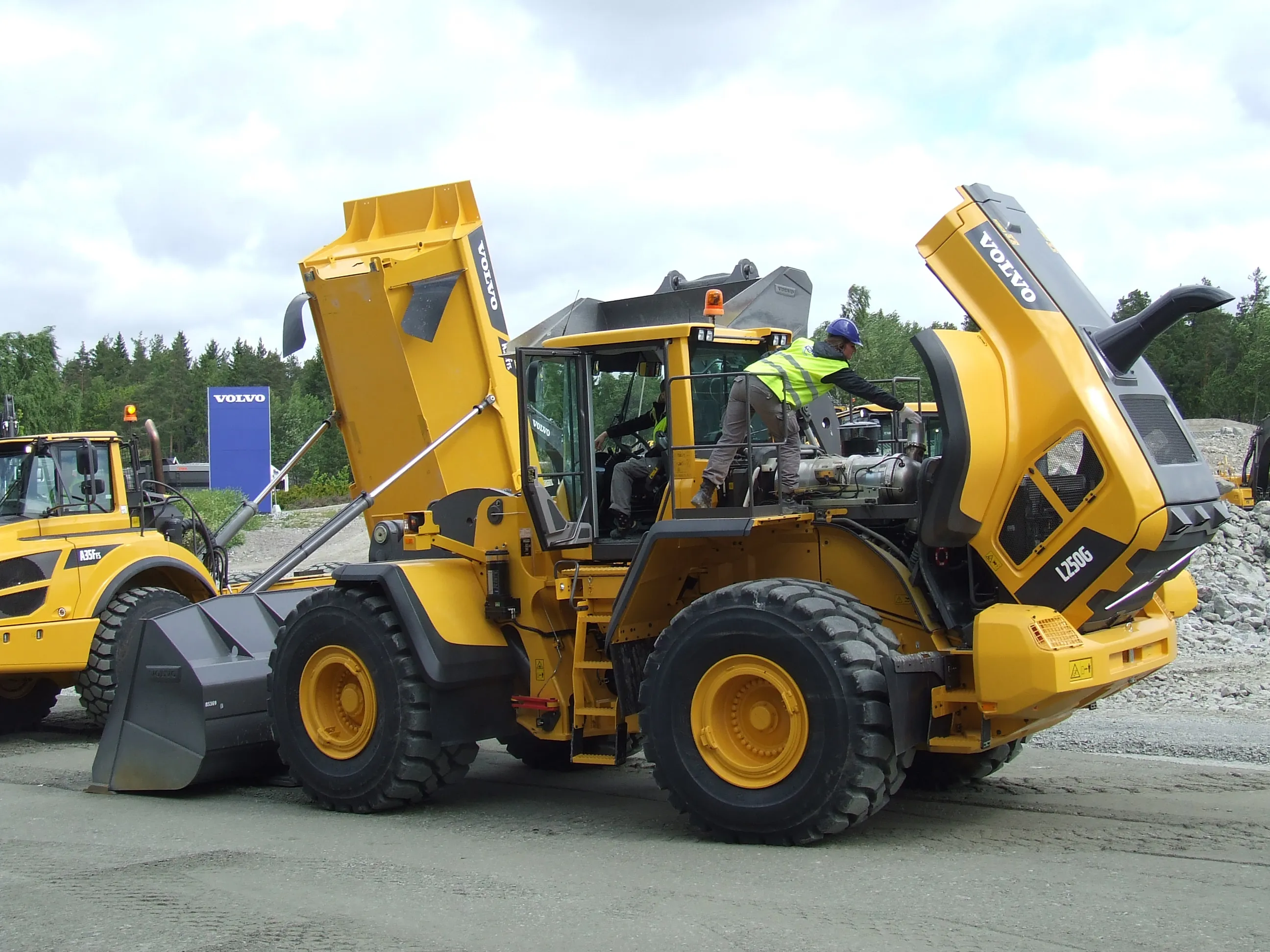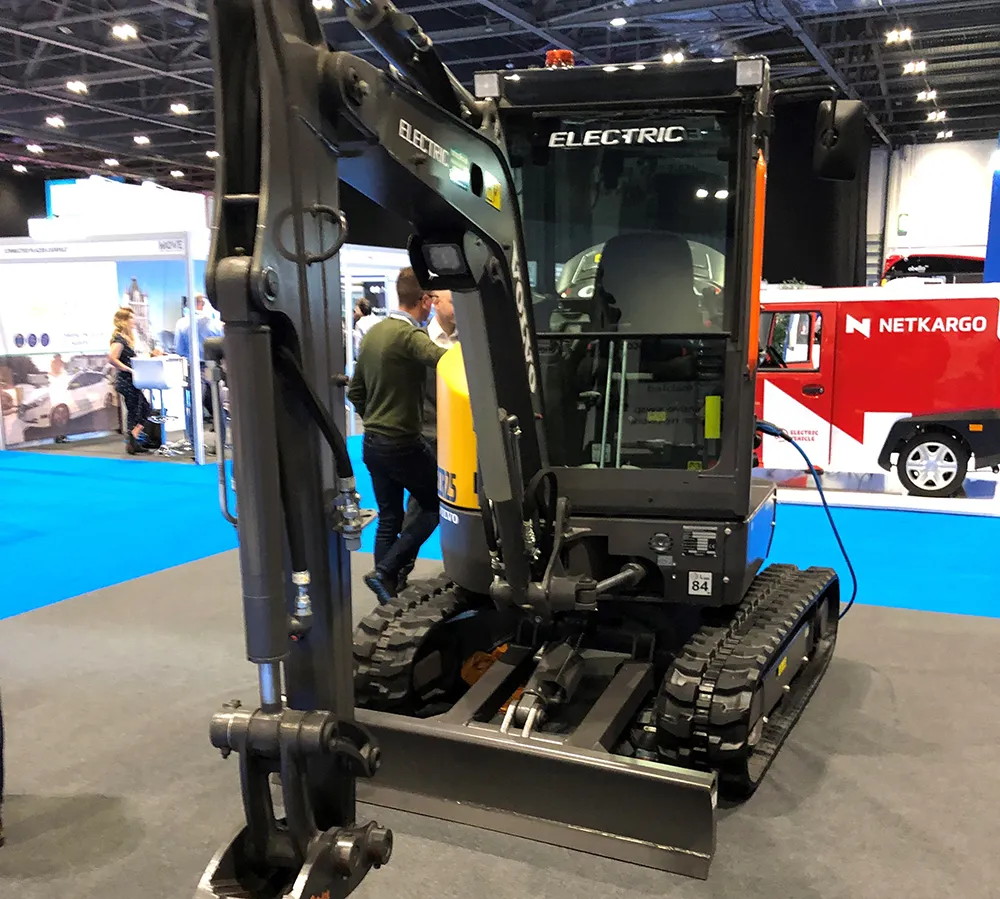
This low maintenance battery features the latest Absorbent Glass Mat technology, with the electrolyte bound in a fleece made of glass fibres. This makes it a leak-proof system and in addition, the new technology is said to be less sensitive to temperature and develops little heat when charging and in operation, delivering greater power during use. The newly upgraded version also now has an onboard battery charger that runs off a 230V supply, allowing easier recharging. The battery is said to be virtually maintenance-free. Customers that already have a WL20e electric wheeled loader can convert to the AGM technology, for example if a battery replacement is due.
The firm says that the performance of the electric machine is directly comparable with that of a conventional diesel unit, while also offering some productivity benefits such as the tipping load, which reaches up to 1,509kg due to the weight of the battery. When the battery of the WL20e is fully charged, it offers five hours of working in most typical applications. The operator can always see the battery's charge status, as it is easily visible on the display. The machine also has very low noise emissions, and it also offers economic advantages with operating cost savings of around 40% over the course of the service life.








